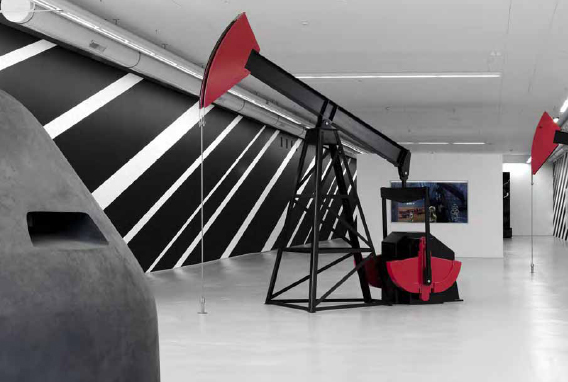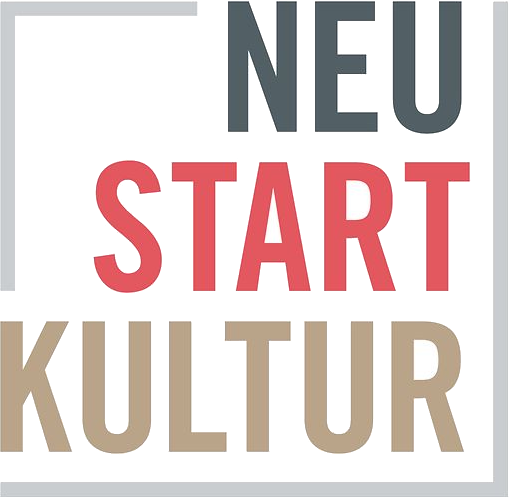Solo Show „Josephine Meckseper“
09.03.2019 - 26.05.2019
Opening: Saturday, March 9th, 2019, 4:30 pm at Frac des Pays de la Loire in Carquefou and 7 pm at HAB Gallery in Nantes. Exhibition period in HAB Galerie, Nantes: 09.02-21.04.2019 and in Frac des Pays de la Loire, Carquefou: 09.03.-26.05.2019.
Frac des Pays de la Loire in Carquefou and HAB Gallery in Nantes.

Josephine Meckseper is presenting, at the invitation of the Frac des Pays de la Loire regional collection of contemporary art, her first solo exhibition in a French establishment. Spread over two sites — the HAB Galerie, Nantes and the Frac at Carquefou — this twofold event brings together a significant selection of works created by the German artist over the past fifteen years, in conjunction with selected works from the Frac collection. As an artist and curator, Josephine Meckseper also incorporates some twenty works by other artists, mainly women (Becky Beaskey, Sherrie Levine, VALIE EXPORT,
Lili Dujourie, Monica Bonvicini, Sister Corita Kent, Karla Black…) into her own offerings, vitrines and shelving units in
particular.
Josephine Meckseper looks to topical issues for the raw material of her works, with a particular penchant for the rhetoric and modes of representation employed by political and economic actors. In 2009, she produced a series
of works focussing on wars waged in countries of strategic importance in terms of US national interests. Josephine
Meckseper takes life-size oil pumpjacks out of their original context „Untitled (Oil Rig n° 2)“. She pits these icons of
industrial power against the replica of a World War II bunker, „Untitled (Bunker)“, reminiscent of the bunkers photographed
and described by Paul Virilio in his book „Bunker Archaeology“ (1975). Meckseper’s aim here is to create links between American economic interests, the automobile industry’s huge dependence on this fossil fuel and the wars waged in the Middle East. The question of freedom of speech, which was severely restricted by censorship during the presidency of George W. Bush, particularly after September 11, 2001, lies at the heart of her video, „March for Peace, Justice and Democracy“, made in 2007. It contains footage of activists
marching in protest against the American presence in Iraq. Here the artist has recorded one of the few demonstrations
authorised in New York that year (and censored by the American media). Shot on 16 mm film, the movie recalls some
of the archival images of much more high-profile mediated protests against the Vietnam War in the late 1960s.
The artist often combines symbols of political protest, such as signs or photographs, with consumer goods. Presented in vitrines or on elevated platforms, these installations possess
a subtle sophistication, a cold luxury. For the artist, these smooth chrome surfaces are “designed to be targets, like high-end shop windows being smashed during riots and protests. These works mimic retail aesthetics in order
to activate the commercial zone into a political one”. The artist arranges disparate elements on an equal footing within these structures. Her method is to accumulate and to juxtapose. Through consumer items, ready-mades, facsimiles (some of which, like Brancusi’s endless column, are taken from modern art history), the artist draws on the reified world of merchandising and the way in which the object captivates the viewer in order to deliver a critical message. Moreover, the installations touch on the historical background of works by Hoetger, Brancusi and Mies van der Rohe and show how the emergence of modernism, German expressionism and the
avant-garde was transformed into a form of political and aesthetic resistance to the upsurge in extremism during the first quarter of the twentieth century. In her latest series of works, which feature heavily in the exhibition, large canvas pieces, digitally modified to convey the texture of paintings, act at once as abstract compositions, contemporary “ready-mades”, images, or even as merely decorative objects.
Through this series, the artist shows how the consumer and communication society tends to dissipate any ideological
discourse and militant practice by fetishizing political symbols and reducing utopias (such as those embraced by avant-garde artists)to phenomena of fashion.
Josephine Meckseper was born in 1964 in Lilienthal, Germany. Her works are featured in various institutional
collections including the Brooklyn Museum; the Frac Nord – Pas-de-Calais regional collection of contemporary art,
Dunkirk; the Kunsthalle Bremen, Germany; the Kunstmuseum Stuttgart, Germany; the Metropolitan Museum of Art, New York; the Migros Museum für Gegenwartskunst, Zürich, Switzerland; the Museum of Modern Art, New York; the Museum on the Seam, Jerusalem; the National Gallery of Victoria, Melbourne; the Solomon R. Guggenheim Museum, New York; and the Whitney Museum of American Art, New
York (photo: Josephine Meckseper: „Untitled (Oil Rig No. 2)“, 2009.)


